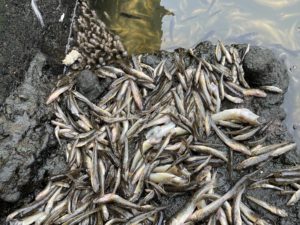Water desalination may seem too costly and too riddled with complications to go anywhere fast. But that doesn’t mean water managers are giving up hope.
Faced with an uncertain future of diminishing water supplies, officials are floating plans for 17 desalination plants in California, and an additional two in Baja, Mexico that would serve the southern part of the state, according to a new status report on the industry by Oakland-based Pacific Institute.
The area between Watsonville and Monterey have the highest concentration of desal proposals, with six facilities in the works. But the Bay Area, too, is showing strong interest with plans for facilities along the shorelines of Pittsburg, Redwood City, and Santa Cruz.
So what would it mean if California moved whole-hog towards desalinization?
That issue was debated in Sacramento this week, where the state’s Water Resources Control Board is drafting new guidelines on the environmental impact of desal facilities. A critical question keeps coming up: is desal more or less environmentally friendly than traditional methods of obtaining water?
Pulling water from wells depletes groundwater supplies, and siphoning water from rivers and streams harms fish and riparian ecosystems. But desal plants also cause fish kills during intake, and expulsion of salt increases the salinity of surrounding ocean water and can cause salt buildup on the ocean seafloor. They’re also energy intensive. That doesn’t sound good.
Environmental groups are calling for desal to be a last resort after water conservation and wastewater recycling. And for sure, the impacts of a desal plant probably vary greatly depending on location and the facility’s design.
In the meantime, here are the details, via the Pacific Institute, of the Bay Area’s proposed desal plants:
Pittsburg plant
Estimated completion date: 2020
Agencies: Contra Costa Water District (CCWD); East Bay Municipal Utility District (EBMUD); San Francisco Public Utilities Commission (SFPUC); Santa Clara Valley Water District (SCVWD); and Zone 7 Water Agency
Design: A desalination facility treating approximately 19 million gallons per day of brackish water from Suisun Bay through an intake at the existing Mallard Slough Pump Station. Disposal of brine still being decided, but could include blending it with treated wastewater from a nearby facility.
Costs: $168.5 million to build; annual operation and maintenance $10.45 million; tapwater $550 per acre-foot.
Milestones: A site-specific analysis by the end of 2012, final report published in February or March, 2013. Depending on the results, an environmental impact review thereafter.
Redwood City:
Estimated completion date: earliest 2025
Agency: California Water Service Company, a privately owned, San Jose-based water company
Design: A desalination facility treating either brackish groundwater or water from the San Francisco Bay with a production of 5 million gallons per day.
Costs: unknown
Milestones: Company is not aggressively pursuing this project at this time, but is discussing the plant as part of long-term planning. To conduct a feasibility study, it needs the approval of the California PUC, which would not occur until 2013 at the earliest.
Santa Cruz:
Estimated completion date: 2016
Agency: City of Santa Cruz and Soquel Creek Water District
Design: A desalination plant with a capacity of up to 2.5 million gallons of water per day, designed to run at half capacity during non-drought years and full capacity during drought years. The water intake design is undecided, but officials are considering open ocean intake, subsurface intake using slant wells or an infiltration gallery. Brinwater would be discharged through the existing wastewater outfalls.
Costs: $115 million to build
Milestones: A draft environmental impact report to be released in the fall, 2012; voter approval prior to plant construction to accommodate public concerns over the energy use and cost of construction.
——-
For the full Pacific Institute report, go here.


